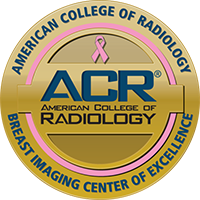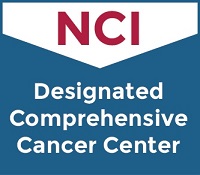Breast Screening - FAQs
At what age should healthy women begin having regular mammograms, and how often should they have them?
The American College of Radiology recommends annual screening beginning at age 40 and this is what we recommend at the Breast Center. Women who are considered higher risk may need to begin mammography earlier; such as in these instances:
- Women with strong family history:
- Women with a past history of receiving radiation to the chest between ages 10 and 30
How long does it take to have a mammogram and how/when do you find out the results?
For screening mammogram patients, our goal is that their exams will be performed and completed in 15 minutes. These exams will be interpreted by the radiologist within 1-2 working days, and letters will be mailed to the patient's home address upon interpretation.
Diagnostic mammography often is a longer exam, because additional images and possibly ultrasound are performed. These patients are given their results at the time of their exam, both verbally and in writing.
What is the difference between a screening mammogram and a diagnostic mammogram?
Screening mammography is performed in asymptomatic patients -- patients who have no clinical signs or symptoms of breast cancer. Two views of each breast are obtained and are checked for technical adequacy by the technologist. These are interpreted later by the radiologist with results sent to the patient by mail.
Diagnostic mammography is performed in symptomatic patients -- patients who have signs or symptoms of breast cancer such as a palpable lump, nipple discharge, skin changes, etc. We also perform diagnostic mammography in patients with a past history of breast cancer, for follow-up of an abnormal screening mammogram, or for short-term follow-up of probably benign findings. These studies begin with the typical mammography views, with additional views and ultrasound obtained as deemed necessary by the radiologist. The studies are interpreted on line, with results given to the patient immediately.
When is an ultrasound recommended, and how does it differ from a mammogram?
Ultrasound is used:
- To evaluate any palpable breast lesion
- To evaluate masses, distortions, or asymmetries found on mammography
- To evaluate findings identified on breast MRI
Ultrasound forms images of the breast utilizing sound waves, not X-rays. No compression is required; a warm gel is placed on the skin and an ultrasound probe is rubbed over the skin to obtain the image.
Ultrasound can often show abnormalities which might go undetected on mammography due to extremely dense breast tissue. Ultrasound is used most commonly in conjunction with mammography, not as a replacement for mammography.
How do you know if you are at high risk for breast cancer?
Elastography is a very new ultrasound technique which helps to measure the 'hardness' of breast lesions by placing gentle compression on the lesion with the ultrasound probe and comparing ultrasound information before and after the compression. Preliminary studies have indicated that this technology may be useful in differentiating benign and malignant lesions in the breast.
What happens if something suspicious is found on my mammogram?
If there is a suspicious finding on your mammogram, you will typically need to have additional views and/or ultrasound performed. The radiologist will consult with you in person and will recommend additional evaluation to make a diagnosis. This might be ultrasound-guided core biopsy, stereotactic breast biopsy, cyst aspiration, needle localization and surgical consultation, or MRI-guided biopsy. We will make every attempt to schedule and perform these procedures as soon as possible, so that our patients do not have to endure a long wait to find out whether or not they have breast cancer.
If something suspicious is found on a mammogram, what is the chance that it might be breast cancer?
Approximately 10% of screening mammograms are called back for additional imaging evaluation, which involves diagnostic mammography views and/or ultrasound. Of those that are called back, only about 10% of those require biopsy (90% are either explained as benign findings or simply require short-term follow-up). Of those that are biopsied, only about 30% actually are cancer. Another way to put this is that out of 1,000 screening mammograms performed, approximately 5 patients will be found to have cancer.
When is breast MRI recommended for breast cancer screening?
These are the recommendations for screening breast MRI, according to the new American Cancer Society guidelines:
- BRCA1 or BRCA2 gene mutation
- First-degree relative (parent, sibling, child) with a BRCA1 or BRCA2 mutation, even if the patient has yet to be tested herself
- Lifetime risk of breast cancer scored at 20%-25% or greater, based on one of several accepted risk assessment tools that look at family history and other factors
- Radiation to the chest between the ages of 10 and 30
- Li-Fraumeni syndrome, Cowden syndrome, or Bannayan-Riley-Ruvalcaba syndrome, or one of these syndromes based on a history in a first-degree relative
If MRI is better, why not have an MRI right away instead of a mammogram?
MRI is the most highly sensitive imaging study for the detection of invasive breast cancer and recent studies indicate it may also be highly sensitive for the detection of intraductal breast cancer. Although it is highly sensitive, it is not highly specific. This means that it also finds lesions which are not cancerous and leads to false positive results and subsequent biopsies. Because of its high false positive rate, high cost and the fact that it benefits from specialized expertise for interpretation, general screening of the population with breast MRI is not ready for prime time. It should be used only for specific indications, as an adjunct to mammography and breast ultrasound.
At this point, MRI should be used in screening only for high risk patients.
Other indications for the use of breast MRI are:
- Evaluation of the extent of disease in patients newly diagnosed with breast cancer, including screening of the contralateral breast
- Evaluation of breast implant integrity
- Evaluation of patients with metastatic axillary adenopathy with no known primary cancer
- Patients with breast cancer who had surgery with close or positive surgical margins (MRI is done before repeat surgery.)
- Evaluation of the response of breast cancer to chemotherapy
- Distinguishing post-operative scar from recurrent cancer
- Problem-solving in certain cases (patients with difficult to interpret mammograms or breast ultrasounds to help clarify equivocal findings)
For more information on our comprehensive breast care services or to schedule a mammogram, please call the breast center at 410-328-3225.
FREE mammography screening for uninsured or under-insured Baltimore City residents is available through the Baltimore City Cancer Program. For more information, please call 410-328-HOPE (4673).




